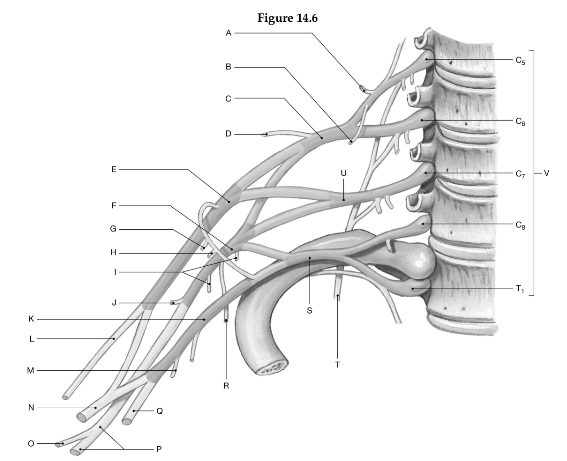Using the figure above, identify the labeled part.

1. Label A: ______________________________
2. Label B: ______________________________
3. Label C: ______________________________
4. Label D: ______________________________
5. Label E: ______________________________
6. Label F: ______________________________
7. Label G: ______________________________
8. Label H: ______________________________
9. Label I: ______________________________
10. Label J: ______________________________
11. Label K: ______________________________
12. Label L: ______________________________
13. Label M: ______________________________
14. Label N: ______________________________
15. Label O: ______________________________
16. Label P: ______________________________
17. Label Q: ______________________________
18. Label R: ______________________________
19. Label S: ______________________________
20. Label T: ______________________________
21. Label U: ______________________________
22. Label V: ______________________________
1. Dorsal scapular nerve
2. Nerve to subclavius muscle
3. Superior trunk
4. Suprascapular nerve
5. Lateral cord
6. Posterior cord
7. Lateral pectoral nerve
8. Medial pectoral nerve
9. Subscapular nerves
10. Axillary nerve
11. Medial cord
12. Musculocutaneous nerve
13. Medial antebrachial cutaneous nerve
14. Median nerve
15. Posterior brachial cutaneous nerve
16. Radial nerve
17. Ulnar nerve
18. Thoracodorsal nerve
19. Inferior trunk
20. Long thoracic nerve
21. Middle trunk
22. Brachial plexus
You might also like to view...
What are the two ways of bicarbonate reabsorption in the proximal tubule?
What will be an ideal response?
Define colostrum
What will be an ideal response?
In order for an action potential to occur, a certain membrane potential called the ________ must be reached.
A. depolarization B. sodium-potassium pump C. threshold D. hyperpolarization
GH promotes __________.
A) cell division B) protein synthesis C) bone growth D) all of the above